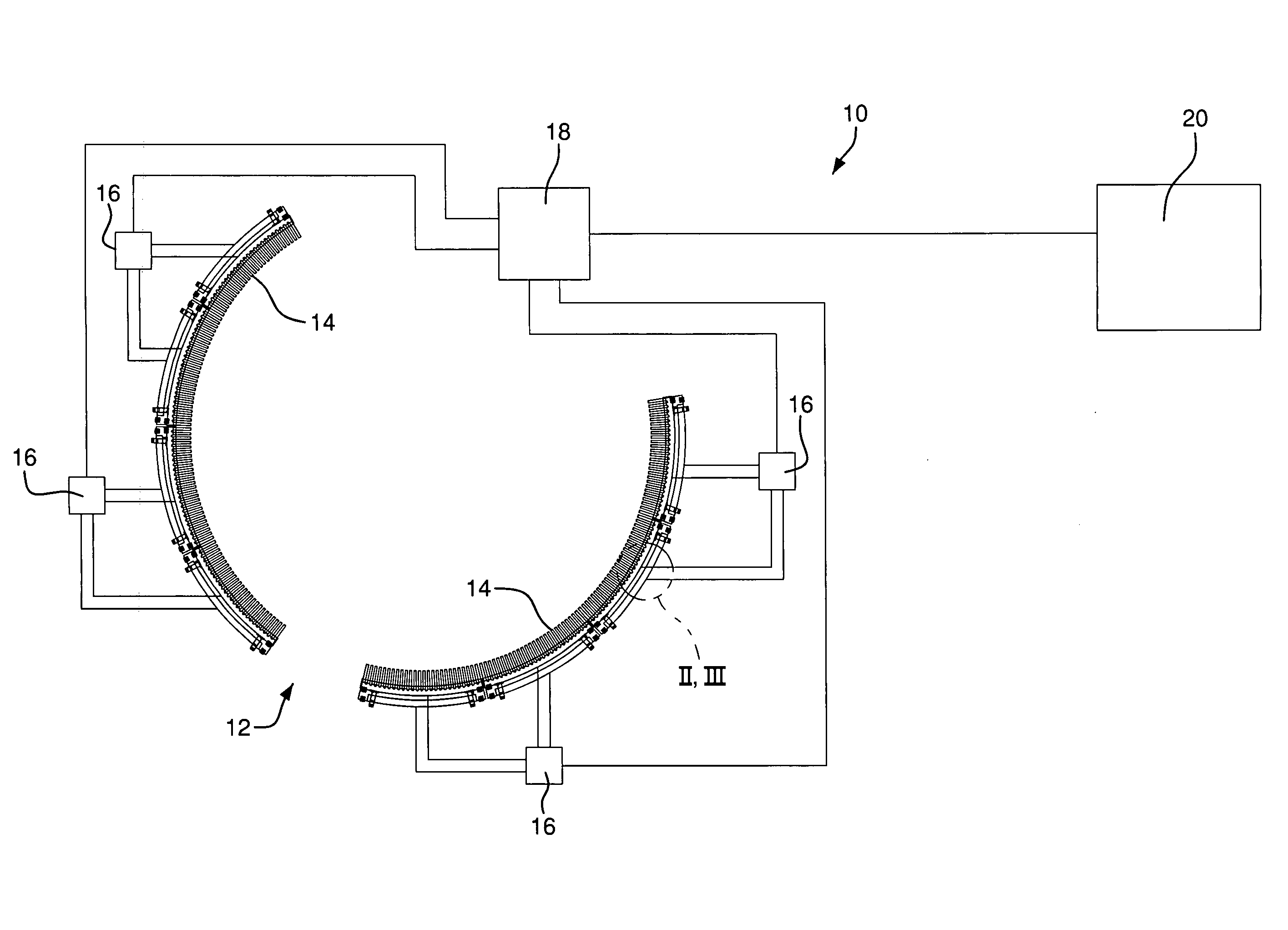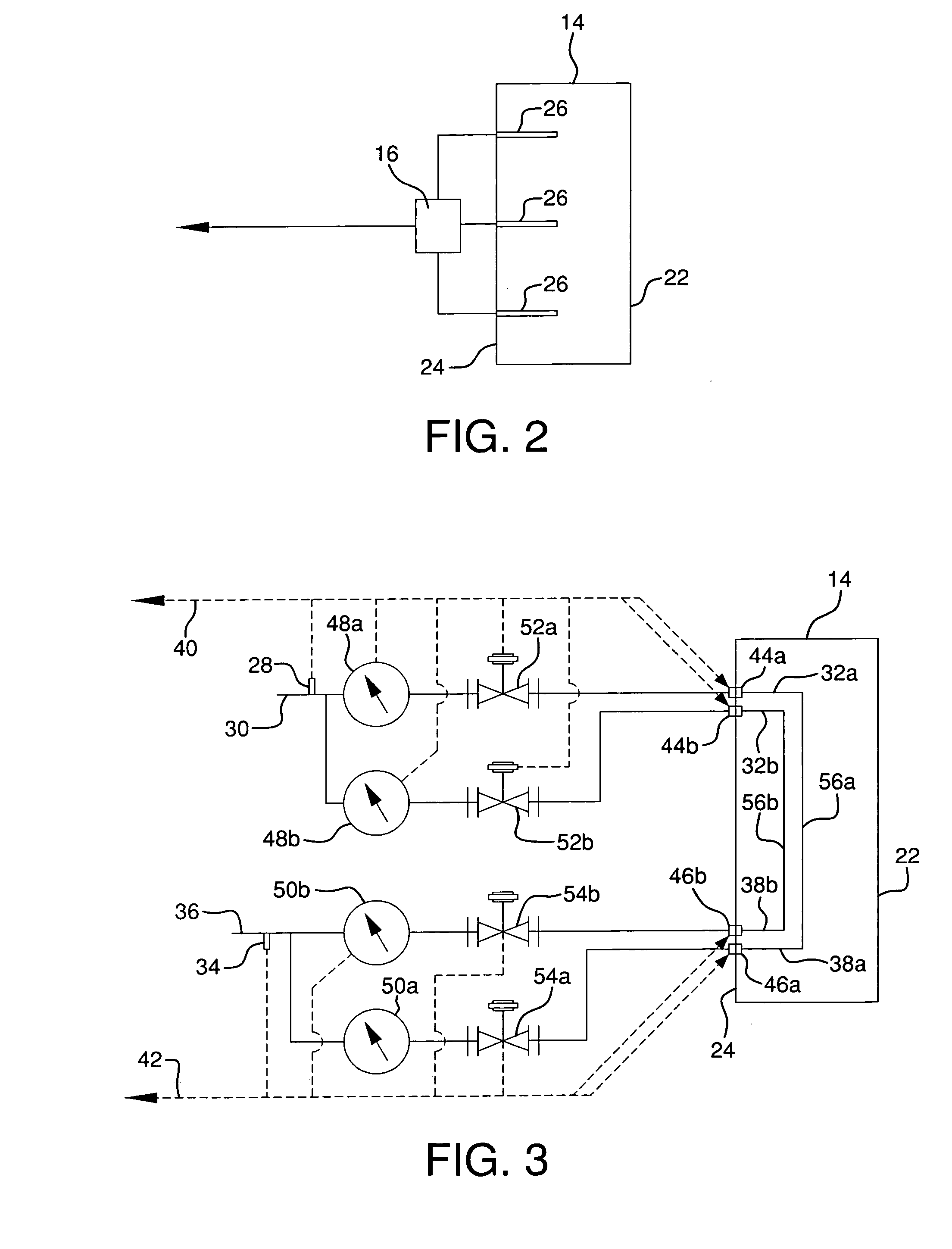Furnace panel leak detection system
a technology for detecting system and furnace, which is applied in the direction of furnaces, combustion types, and failure to meet the requirements of combustion, etc., can solve the problems of large volume of cooling water entering the furnace, frequent leakage of furnace wall panels, and cumbersome procedures
- Summary
- Abstract
- Description
- Claims
- Application Information
AI Technical Summary
Benefits of technology
Problems solved by technology
Method used
Image
Examples
Embodiment Construction
[0027]Referring to the drawings wherein like or similar references indicate like or similar elements throughout the several views, there is shown in FIG. 1 a furnace panel fluid coolant leak detection system according to the present invention, identified generally by reference numeral 10. The system includes a high energy, typically industrial, furnace 12 such as a metal smelting furnace, a blast furnace, an EAF or the like. Furnace 12 is shown in top plan view in FIG. 1 and includes a plurality of fluid-cooled wall panels 14, described in greater detail hereinafter, several of which are omitted for clarity of illustration. A typical furnace may be about 15-30 feet in diameter and may comprise from as few as about 4 panels to as many as about 40 panels, although the furnace dimensions and number of panels may vary and will be dependent upon the requirements of the furnace installation.
[0028]System 10 further comprises a plurality of electrical junction boxes 16 in electrical communi...
PUM
 Login to View More
Login to View More Abstract
Description
Claims
Application Information
 Login to View More
Login to View More - R&D
- Intellectual Property
- Life Sciences
- Materials
- Tech Scout
- Unparalleled Data Quality
- Higher Quality Content
- 60% Fewer Hallucinations
Browse by: Latest US Patents, China's latest patents, Technical Efficacy Thesaurus, Application Domain, Technology Topic, Popular Technical Reports.
© 2025 PatSnap. All rights reserved.Legal|Privacy policy|Modern Slavery Act Transparency Statement|Sitemap|About US| Contact US: help@patsnap.com



